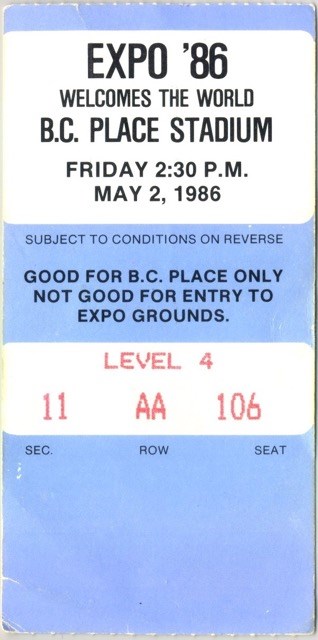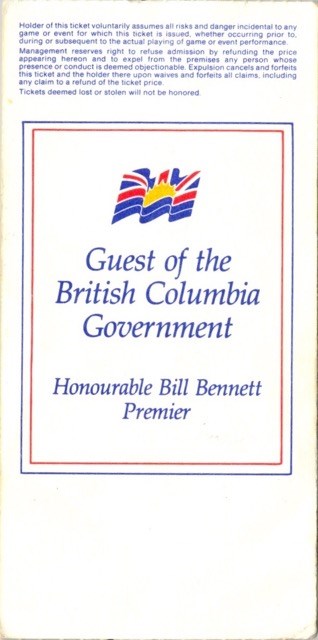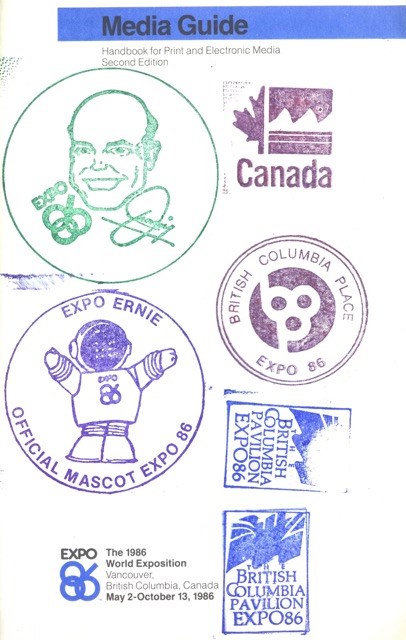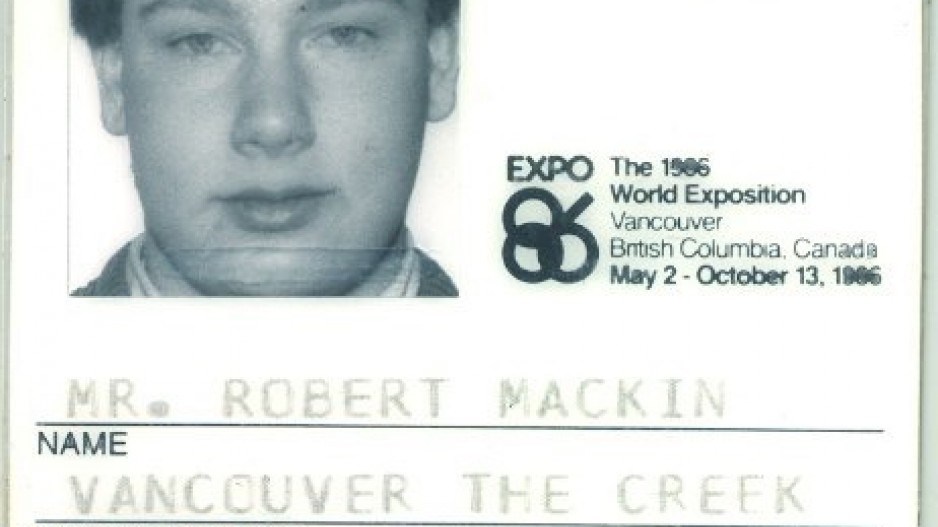A look back at Vancouver’s Expo 86, which opened 30 years ago today, and some of the lesser-known aspects of the 165-day fair and its legacies
One-upmanship
Architect Randle Iredale’s vision to transform False Creek’s north shore from a railyard into a community eventually morphed with Social Credit cabinet minister Sam Bawlf’s idea to mark Vancouver’s 1986 centennial with an international exposition.
The catalyst was a 1978 meeting in London between B.C. tourism minister Grace McCarthy and Canadian diplomat Patrick Reid, who would become Expo 86’s commissioner general. Seattle was hosting the Treasures of Tutankhamun exhibit that summer and fall on its 1962 world’s fair site, so McCarthy wanted to bring the Mona Lisa to Vancouver. Reid suggested bidding for a world exposition instead.
That bid was filed in 1979 and, on November 26, 1980, the Bureau International des Expositions chose Vancouver to host Transpo 86, a six-month transportation and communications-themed fair.
Some things didn’t happen here
“Something’s Happening Here” was the theme song performed by Nancy Nash at the May 2 opening ceremony in B.C. Place Stadium, but many things never happened.
NASA didn’t agree to send the Space Shuttle for a YVR touchdown. A $12 million, 100-metre high ferris wheel was never built in Coal Harbour off Stanley Park. Expo’s administration offices stayed on dry land, instead of moving to a Coast Guard weather ship.
The old Canadian Pacific Railway Roundhouse was spared from the wrecking ball. Sponsor Esso led a campaign to sell monogrammed bricks for $19.86 to restore historic Engine 374, which arrived in 1887 on the west coast with the first transcontinental train.
The Roundhouse (now a community centre), Expo Centre (now Science World) and part of the B.C. Pavilion are the only buildings left from the main fair site.
Sticker shock, part 1
The 1981-appointed chair, Jim Pattison, made his name buying cars low and selling them high. But he overpaid for two Expo-related vehicles.
John Lennon’s psychedelic Rolls Royce was a popular attraction at the fair. Pattison spent $2.2 million at a 1985 auction, seven times more than Sotheby’s anticipated.
Pattison was furious when he learned CEO Michael Bartlett charged his $48,850 Mercedes Benz to Expo in August 1983. Pattison’s leasing company paid $48,624 for it, with Bartlett paying the difference. Pattison then sold it for a $7,000 loss in 1984. Bartlett was fired in 1985 and Pattison took over day-to-day operations.


(Image: Front and back of a ticket to the May 2, 1986, opening ceremony at BC Place)
Techno-legacies
Canadian-developed Telidon videotext monitors (a precursor to the World Wide Web) and two-way video terminals (a precursor to Skype and FaceTime) dazzled fairgoers.
Under the five sails at the Canada Pavilion in Canada Place, the star attraction was the Hystar Airship. Even the royal couple was mesmerized.
“Diana was just there shaking her head,” co-inventor Dale Kramer told me in a 2014 interview. “Charles was really into aviation and he asked good questions, as far as how it would be used and how it was different.”
In April 1986, New Scientist magazine called the remote controlled flying machine a “cross between an airship and a helicopter.”
Today, we would simply call it a drone.
Tragedy and commiseration
The Patricia Hotel was one of the Downtown Eastside hotels that looked to capitalize on the tourism boom. Social activists blamed a Patricia “renoviction” for the death of 88-year-old retired lumberjack Olaf Solheim two weeks after he was forced to move from his home of six decades. It inspired an anti-Expo protest at Malkin Bowl featuring DOA and legendary folksinger Pete Seeger.
Alberta glazier Don Heald, 27, suffered a fatal 20-metre fall through a hole in the glass roof of the B.C. Pavilion on Sept. 9, 1985. Just a week after the fair opened on May 9, nine-year-old Karen Ford died in a freak accident in a revolving Canada Pavilion theatre. The investigation found contractor Canron decided to save $3,000 rather than buy an automatic warning device that could have prevented the tragedy.
Sticker shock, part 2
Vancouver hosted Canada’s second world’s fair, after Montreal 1967. It was also the fourth held in the Pacific Northwest, after Seattle (1909 and 1962) and Spokane (1974).
A May 1980 study predicted a $12 million deficit on $137.85 million revenue after spending $75 million to build and $74.72 million to operate the fair. The fair ended up $365 million in the red from the land buy and fair operations and construction.
The largest specialized world’s fair was the first and last in North America to include the U.S., the Soviet Union and China. Vancouver held the 18th North American world’s fair in a 110-year period and it may have been the last on this continent. An Edmonton bid for 2017 was deemed too expensive by the federal government, but a group in Toronto is mulling a 2025 bid. Next year’s is in Astana, Kazakhstan. Dubai, U.A.E. is gearing up for 2020.
The same October week that Vancouver’s gates closed, the International Olympic Committee made key decisions that would position the five-ring circus as a more-attractive business and media opportunity than world expositions. The IOC lifted the ban on professional athletes and, beginning with 1994, the winter and summer games would be held two years apart.

(Image: Some of the popular Expo 86 passport stamps, including ones for Jim Pattison and Expo Ernie)
Goodbye and good buy
The 341,806 turnstile clicks on the fair’s last day meant 22,111,578 were recorded over its entire run. BIE’s final report knocked Expo 86’s “confrontational management style,” but did say the October 13-ended fair was “imaginatively conceived and designed, superbly planned.”
Pattison paid $53,000 at the post-fair auction in BC Place for the only one of the five Expo Ernie robot mascots that remained fully operational. A bigger deal was on the horizon — the Concord Pacific purchase of the False Creek site. A computer error delayed the company’s $50 million May 1988 down payment. Li Ka Shing recouped most of that investment with the 1990 sale to Canadian Metropolitan Properties of the Plaza of Nations. Its anchor tenant, Edgewater Casino, is moving across the street to a new complex next year.
Bob Mackin covered Expo 86 for The Creek monthly community newspaper in False Creek. At age 15, he was unofficially the youngest accredited reporter at the fair.




